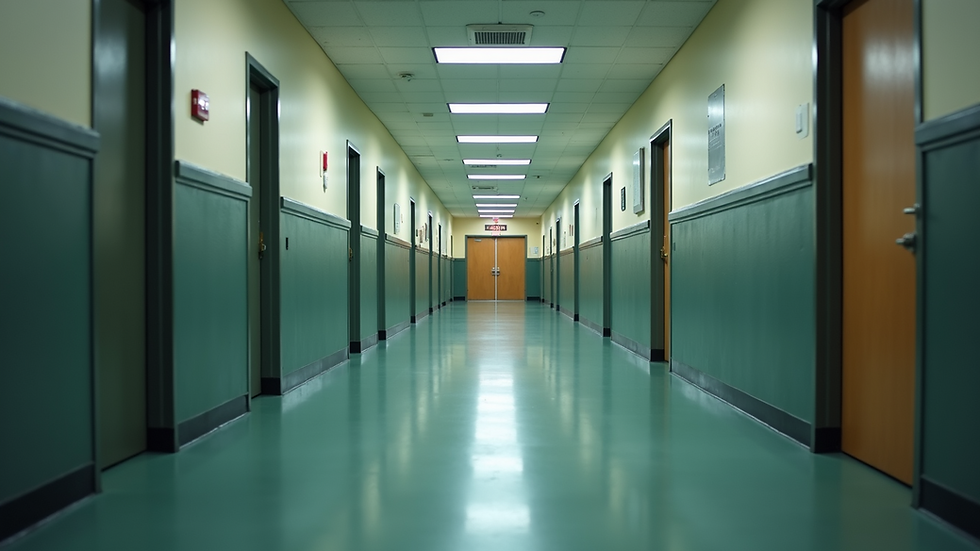Prepare for Emergencies: Active Shooter Response
- blackflagprotectio
- Aug 18
- 4 min read
Emergencies can happen anywhere, at any time. We must be ready to act quickly and decisively to protect ourselves and those around us. Preparing for an active shooter situation is a critical part of emergency preparedness strategies, especially for places like churches and schools. These locations often have vulnerable populations and require tailored security measures. In this post, we will explore practical steps and clear guidance to help us prepare effectively for emergencies, focusing on active shooter scenarios.

Understanding the Importance of Emergency Preparedness Strategies
Emergency preparedness strategies are essential for minimizing harm during critical incidents. We cannot predict when an emergency will occur, but we can control how we respond. Being prepared means having a plan, training regularly, and ensuring everyone knows their role. This approach builds confidence and reduces panic.
For organizations like churches and schools, preparedness is even more vital. These places often have many people, including children and elderly individuals, who may need extra assistance. Our goal is to create a safe environment where everyone feels secure and knows what to do if danger arises.
Key elements of emergency preparedness strategies include:
Risk assessment: Identify potential threats and vulnerabilities.
Communication plans: Establish clear methods to alert and inform everyone.
Training and drills: Practice response actions regularly.
Resource allocation: Ensure access to emergency supplies and security personnel.
Coordination with law enforcement: Build relationships with local responders.
By focusing on these elements, we strengthen our ability to respond effectively and save lives.
Developing a Clear and Practical Emergency Plan
A well-crafted emergency plan is the foundation of any preparedness strategy. It should be simple, easy to understand, and accessible to all members of the organization. Here are the steps to develop a plan that works:
Identify roles and responsibilities: Assign specific tasks to staff and volunteers. For example, designate individuals to lead evacuations, provide first aid, or communicate with emergency services.
Define evacuation routes and safe zones: Map out multiple exit paths and safe areas where people can gather away from danger.
Establish lockdown procedures: Detail how to secure doors, turn off lights, and remain silent during a threat.
Create communication protocols: Use alarms, public address systems, or mobile alerts to notify everyone quickly.
Include special considerations: Plan for individuals with disabilities, young children, or those needing extra help.
Regularly review and update the plan to reflect changes in the environment or personnel. Share the plan widely and ensure everyone understands it.

Training and Drills: Building Confidence and Readiness
Training is the key to turning plans into action. Without practice, even the best plans can fail under pressure. We must conduct regular drills that simulate real-life scenarios. These exercises help us identify weaknesses and improve our response.
Effective training includes:
Active shooter response drills: Practice lockdown, evacuation, and communication steps.
Role-playing exercises: Allow staff to experience different roles and responsibilities.
First aid and CPR training: Equip team members to provide immediate medical assistance.
Stress management techniques: Teach how to stay calm and focused during emergencies.
Incorporate feedback from participants to refine procedures. Encourage open discussions about concerns and suggestions. The more prepared we are, the more confident we feel.
Leveraging Technology and Security Measures
Technology plays a vital role in enhancing emergency preparedness strategies. We can use various tools to detect threats early and communicate effectively.
Some useful technologies include:
Surveillance cameras: Monitor entrances and common areas for suspicious activity.
Access control systems: Restrict entry to authorized personnel only.
Mass notification systems: Send alerts via text, email, or loudspeakers instantly.
Panic buttons: Allow quick alerts to security or law enforcement.
In addition to technology, consider hiring trained armed security personnel. Their presence can deter potential threats and provide immediate response if an incident occurs. For specialized support, we recommend exploring professional services like active shooter response teams who bring expertise and experience to vulnerable locations.

Creating a Culture of Safety and Awareness
Emergency preparedness is not just about plans and equipment. It is about fostering a culture where safety is everyone's responsibility. We must encourage vigilance, communication, and mutual support.
Ways to build this culture include:
Regular safety meetings: Discuss updates, share information, and reinforce procedures.
Encourage reporting: Make it easy and safe for people to report suspicious behavior.
Promote awareness campaigns: Use posters, newsletters, and social media to keep safety top of mind.
Support mental health: Provide resources to help individuals cope with stress and trauma.
When everyone feels involved and informed, the entire community becomes stronger and more resilient.
Taking Action Today for a Safer Tomorrow
Preparing for emergencies requires commitment and continuous effort. We cannot afford to wait until a crisis happens to act. By implementing these emergency preparedness strategies, we take control of our safety and protect those who depend on us.
Let us:
Review and update our emergency plans regularly.
Train and drill with purpose and frequency.
Invest in technology and professional security services.
Build a culture of awareness and responsibility.
Together, we create safer environments where peace of mind is not just a hope but a reality. Our proactive approach ensures that when emergencies arise, we respond with confidence, clarity, and care.

By embracing these principles and actions, we move closer to a future where every organization and individual feels secure. Let us prepare today to protect tomorrow.






Comments